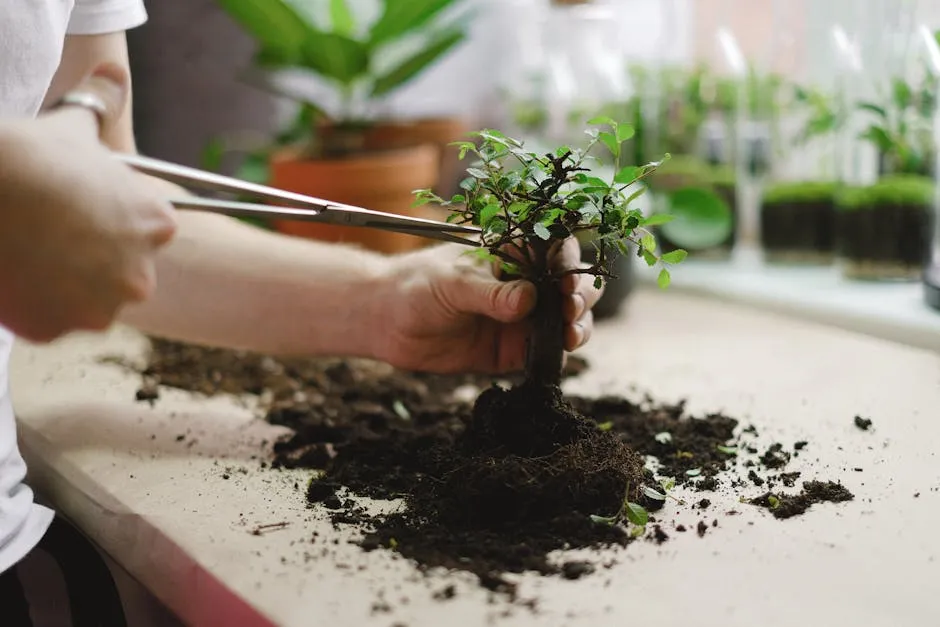

How to Start a Community Garden in Your Neighborhood: A Step-by-Step Guide
Introduction
Starting a community garden can be one of the most rewarding projects in your neighborhood. Imagine a place where neighbors come together, dirt under their nails, laughter in the air, and fresh produce growing just a few steps away. Not only do community gardens beautify our surroundings, but they also foster relationships and provide access to fresh fruits and vegetables. Whether you’re a seasoned gardener or a complete novice, this guide will help you dig into the process of starting a community garden, ensuring that your efforts bloom into a vibrant community asset.
Community gardens offer more than just a patch of green. They are spaces for collaboration, learning, and sharing. You can grow fresh herbs, tomatoes, or even flowers that brighten your street. Plus, these gardens act as a local hub, where people can gather, exchange ideas, and build friendships. Who knew that planting seeds could lead to cultivating connections?
Starting a community garden requires a little planning and a lot of enthusiasm. It’s not just about the gardening; it’s about creating a sense of belonging. So, grab your Garden Gloves and gather your neighbors. This guide will lead you through the steps to transform that vacant lot into a flourishing garden oasis. Let’s get those green thumbs ready and watch your neighborhood thrive as you nurture not just plants but community spirit!

Summary
In this comprehensive guide, we’ll walk you through everything you need to know about starting a community garden in your neighborhood. From gathering support to choosing the right location, we’ll cover the essential steps to ensure your gardening venture flourishes. Here’s what you can expect to learn:
- The Importance of Community Gardens: Discover the numerous benefits these gardens bring, such as improved access to fresh produce, enhanced community engagement, and educational opportunities for local youth.
- Initial Steps: Learn how to assess community interest and build a dedicated team that shares your vision.
- Finding the Right Location: Explore the factors to consider when selecting land for your garden, including sunlight, water access, and soil quality.
- Planning and Organizing: Get tips on how to develop a solid garden plan, including budget considerations and securing necessary permissions.
- Implementation and Maintenance: Understand the steps involved in preparing the site, planting, and ongoing maintenance to ensure the garden thrives.
- Community Involvement: Find out how to engage the community through events, workshops, and sustainable practices that ensure the longevity of your project.
By the end of this article, you’ll have a clear roadmap to transform your neighborhood into a greener, more connected community through the establishment of a community garden.

Why Start a Community Garden?
Community gardens are more than just patches of dirt; they are spaces bursting with potential. Picture this: neighbors coming together, sharing laughter, and growing fresh produce. It’s like a cooking show meets a neighborhood block party! But let’s get into the nitty-gritty of why you should consider starting a community garden.
Access to Fresh Produce
In many areas, fresh produce can feel like a luxury. Grocery stores may be few and far between, especially in food deserts where access is limited. A community garden can change that! By growing your fruits and vegetables, you not only enjoy healthier meals but also save some bucks. Who wouldn’t want to grab a juicy tomato right from their backyard instead of paying premium prices at the store?
And while you’re at it, why not consider a Vegetable Seeds Variety Pack? This nifty collection can help you get started on growing everything from carrots to cucumbers, ensuring your garden is as diverse as your community!
Community Engagement
Let’s face it—life can be a tad lonely sometimes. But a community garden can bring people together like a potluck on steroids! Gardening fosters relationships among neighbors. You’ll bond over shared responsibilities, plant swaps, and maybe even some friendly competition over who can grow the tallest sunflower. It’s all about creating connections that can transform your neighborhood into a tight-knit community.
Educational Opportunities
Gardening is not just about digging holes and planting seeds. It’s a fantastic way to educate both young and old about sustainable practices. Workshops can be held to teach valuable skills—from composting to pest control. Imagine kids learning where their food comes from and how to grow it. By creating a space for learning, you empower your community with knowledge that can last a lifetime.
And to help those budding gardeners, consider using a Gardening Book like “The Vegetable Gardener’s Bible.” This treasure trove of information will ensure that everyone in your community is equipped with the right knowledge to grow their own food successfully!
Environmental Stewardship
Last but not least, community gardens play a vital role in environmental stewardship. They encourage biodiversity, help pollinators thrive, and reduce urban heat. Plus, turning vacant lots into green spaces is like giving Mother Nature a hug! The more green we create, the better our air quality and overall ecosystem health.
In a nutshell, starting a community garden is a win-win situation. You gain access to fresh produce, foster community spirit, create educational opportunities, and enhance environmental health. So, gather your neighbors and let’s get those gardening gloves on!

Steps to Starting a Community Garden
Step 1: Assess Community Interest
Before you plant the first seed, you need to know if your neighbors are on board. Use surveys or host community meetings to get the scoop. Ask questions like, “Who’s interested?” and “What would you like to grow?” Engaging your neighbors is key to success.
Involving local organizations is also a smart move. Schools, churches, and businesses might want to lend a hand. Think of it as forming an alliance for the greater good—like the Avengers, but with shovels and watering cans!

Step 2: Form a Gardening Committee
Now that you know there’s interest, it’s time to build your crew. Create a diverse team with individuals who bring different skills to the table. You might need a horticulturist, an accountant, and someone who just loves to dig in the dirt.
Define roles clearly to keep things running smoothly. This committee will be responsible for making decisions and organizing activities. Have regular meetings to keep everyone in the loop.

Step 3: Identify a Suitable Location
Finding the right spot for your garden is crucial. Look for land that gets plenty of sunlight—at least six hours a day. Accessibility matters too; you want it to be easy for everyone to reach.
Consider soil quality and drainage as well. Poor soil can lead to poor crops, and nobody wants that! Once you’ve found a potential location, contact landowners to obtain the necessary permissions. A friendly conversation can go a long way, so charm those landowners with your vision for a vibrant community space!

Step 4: Develop a Garden Plan
Creating a garden plan is like drawing a treasure map. You need to know where to plant what, and where everyone will walk without stepping on a tomato!
Design Layout
Start by sketching out your garden. Include individual plots for each gardener. These can be small, manageable spaces for personal crops. Then, allocate communal areas for shared plants or flowers. Pathways are crucial—nobody wants to play hopscotch with a carrot patch! Ensure pathways are wide enough for wheelbarrows and friendly chats.
Consider adding seating areas for gardeners to relax after a hard day’s work. Imagine sipping lemonade while admiring your green masterpiece! Don’t forget to think about sunlight exposure. You want to make sure no one’s plants are overshadowed.
Budgeting
Next up: budgeting. It’s like planning a party, but instead of cake and balloons, you’ll need soil and seeds. Estimate your costs by listing all necessary items: soil, seeds, tools, and maybe even water access.
Look into funding options. Local businesses might sponsor your garden, or you could host a fundraising event—think bake sales or plant swaps! Grants from community organizations can also be a lifesaver.
Plan for sustainability, too. Include a budget for ongoing costs like maintenance. This way, your garden won’t just be a one-season wonder. With a solid plan, you’ll cultivate not just plants but also lasting community connections.

Step 5: Prepare for Planting
Preparation is half the battle in gardening. So let’s get our hands dirty—literally!
Soil Testing
First, test your soil. A Soil Test Kit can reveal pH levels, nutrient content, and whether your soil is ready to support life. If your soil is lacking, don’t panic! You can amend it with compost or organic fertilizers. Healthy soil is the foundation for thriving plants.
Install Infrastructure
Next, ensure your garden has the right infrastructure. Set up a reliable water source. This could be a Watering Can or a hose with a nearby faucet. Watering is key, especially in those hot summer months. For best practices on watering, check out this resource.
Create paths with mulch or gravel to keep things tidy and accessible. Consider fencing, too! A little barrier can keep out pesky critters who might think your veggies are a buffet.
With everything in place, your garden is ready for planting, and it’s time to watch the magic unfold!

Step 6: Planting and Maintenance
Time to get your hands dirty and dive into planting!
Plant Selection
Choose crops that suit your climate and community tastes. Local favorites might be tomatoes, peppers, or herbs. Consider seasonality; plant early crops like peas in spring and save tomatoes for the summer. Variety keeps things exciting!
Establish Maintenance Routines
Once planted, it’s important to establish a maintenance routine. Schedule regular care days where everyone can pitch in. This not only keeps your garden tidy but also builds camaraderie among members.
Consider using a Garden Trowel Set to make planting and weeding easier for everyone involved. With the right tools, those gardening tasks can be a breeze!
Community workdays can be a fun time for socializing while tending to your plants. Plus, nothing beats the satisfaction of harvesting fresh produce together. With teamwork, your garden will thrive, and so will your community spirit!

Building Community and Sustainability
Creating a community garden is not just about plants; it’s about bringing people together and nurturing a sustainable environment.
Engaging Community Members
Organize Events
Make your garden a hub of activity! Host planting days, workshops, and harvest celebrations. These events are perfect for sharing knowledge and skills. You could even have a “best tomato” contest—let the friendly rivalry begin!
Encourage Collaboration
Foster ownership among community members. Encourage everyone to take responsibility for their plots and common areas. This collaborative spirit will help your garden flourish. Regular meetings can keep everyone informed and engaged, ensuring that every voice is heard.
When people feel invested, they are more likely to care for the garden. Celebrate achievements, whether big or small, because every little step counts! By building a vibrant community around your garden, you’ll create a lasting legacy of both plants and friendships.

Promoting Sustainability
Implementing eco-friendly practices is crucial for any community garden. Start with organic gardening techniques. Ditch the chemicals and embrace natural solutions. These practices help maintain soil health and protect local wildlife. Think of your garden as a sanctuary, not just for plants but also for beneficial insects and critters.
Composting is another fantastic way to promote sustainability. Gather kitchen scraps, yard waste, and leaves. Create a Compost Bin. This not only reduces waste but also enriches the soil. For tips on composting in small spaces, check out this guide.
Consider using native plants in your garden. These beauties are adapted to local conditions, requiring less water and care. They also attract local pollinators, creating a vibrant ecosystem. A garden filled with native plants is a feast for the eyes and the local wildlife!
Creating educational opportunities is just as vital. Involve local schools and experts in the process. Host workshops on sustainable gardening, composting, and cooking with fresh produce. Invite local chefs to demonstrate how to prepare meals from the harvest. This not only educates but also builds a sense of community around the shared goal of sustainability.
Encourage hands-on activities for kids. They could plant seeds, learn about plants, and take pride in watching them grow. These experiences foster a love for nature and gardening in the younger generation.
By promoting sustainable practices, your community garden can become a model of environmental stewardship. You’ll not only grow delicious produce but also cultivate a community that values and respects nature. So roll up those sleeves, and let’s dig into sustainability together!

Conclusion
Starting a community garden is an enriching endeavor that not only provides fresh produce but also cultivates community spirit. By following the steps outlined in this guide, you can create a thriving space that fosters connections, promotes sustainability, and contributes to a healthier environment. So gather your neighbors, roll up your sleeves, and let’s get planting!
Your community garden can be more than just a patch of green. It’s an opportunity for growth—both for the plants and the people involved. As you sow seeds, you’ll also be planting friendships and creating a sense of belonging.
Imagine the joy of watching children learn about nature while digging in the dirt. Picture neighbors exchanging recipes and gardening tips as they harvest their crops. It’s about building relationships and sharing knowledge. Your garden will become a hub of laughter, learning, and love.
So, why wait? Now is the time to take action. Reach out to your neighbors and start planning your community garden. Whether it’s a small patch or a larger plot, every effort counts. Together, you can transform your neighborhood into a lush, green oasis.
Let’s cultivate not just plants but also community spirit. With a little planning and a lot of enthusiasm, your community garden will flourish. Happy gardening!

FAQs
What is a community garden?
A community garden is a shared space where individuals come together to grow fruits, vegetables, and flowers for personal use and community benefit. It’s like a potluck, but with plants instead of dishes! These gardens transform vacant spaces into vibrant hubs of activity, fostering connections among neighbors while promoting healthy eating.
How do I find land for a community garden?
Finding land can be easier than you think! Start by checking public parks, vacant lots, or even private landowners who might be willing to donate or lease space. Local governments sometimes have unused land available. Just remember to roll up your sleeves and charm them with your community vision!
How much does it cost to start a community garden?
The initial costs can vary widely. Generally, you’re looking at anywhere between $1,500 and $5,000. This depends on the land size, resources needed, and whether you’re sourcing materials or getting crafty with donations. Keep an eye out for local grants or sponsorships to help lighten the financial load!
Can I start a community garden in an urban area?
Absolutely! Urban areas often hide treasures in the form of unused lots just waiting to bloom. These spaces can be transformed into beautiful community gardens, providing fresh produce and a breath of fresh air in concrete jungles. So, whether you’re in the city or the suburbs, there’s always a chance to dig in!
How can I engage my community in the garden?
Engaging the community is all about creating fun and inclusive opportunities! Organize events like planting days, workshops, and harvest celebrations to encourage participation. These gatherings not only bring folks together but also foster a sense of ownership and pride in the garden. After all, a garden grows better with a little help from friends!
Please let us know what you think about our content by leaving a comment down below!
Thank you for reading till here 🙂
All images from Pexels



